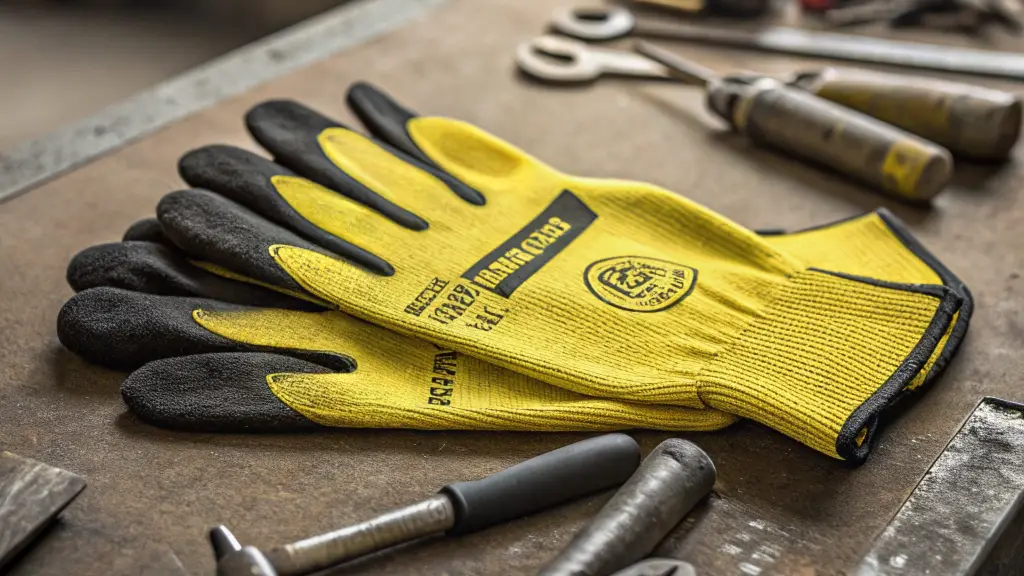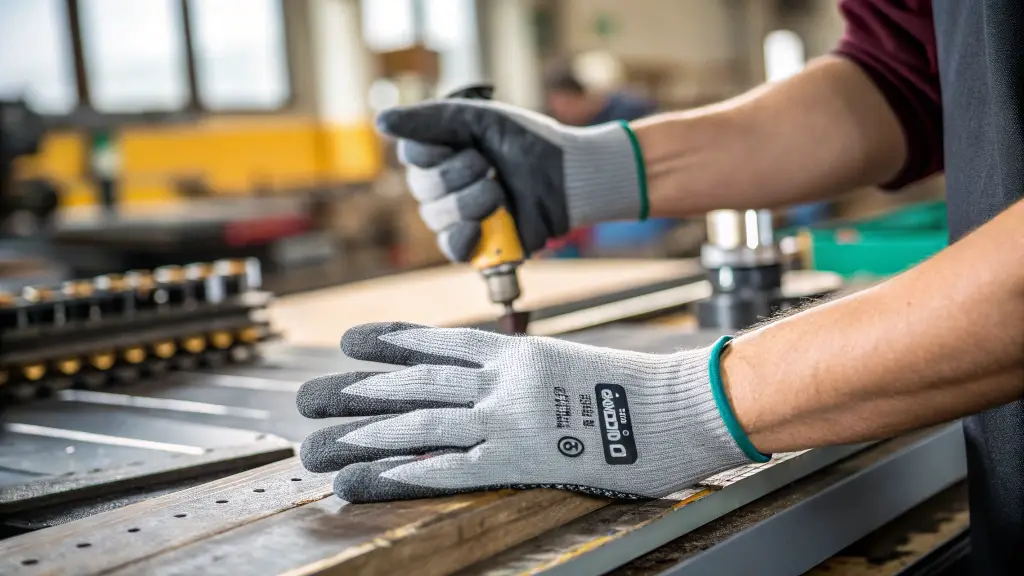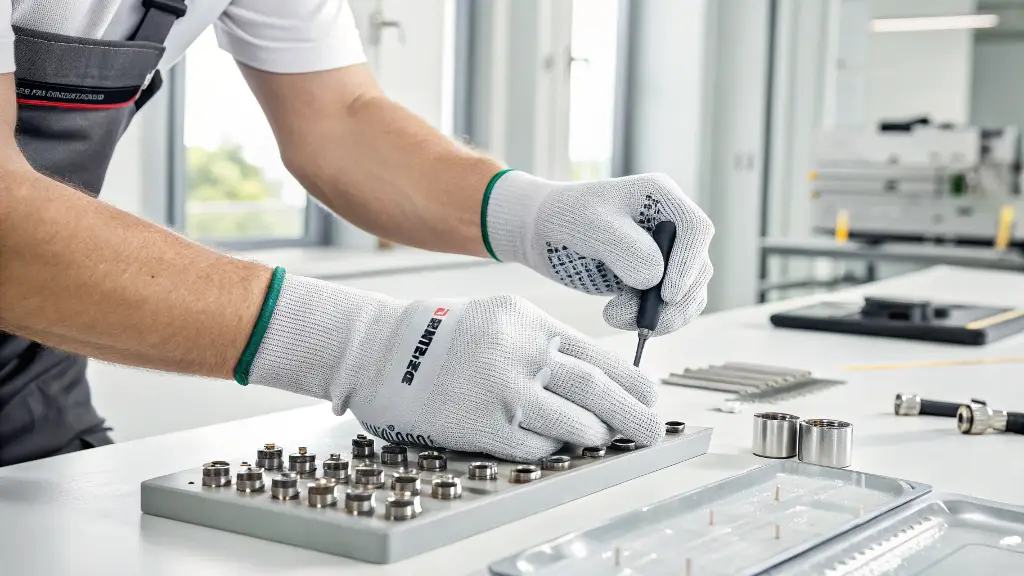PU coated gloves are a popular choice for workers who require a balance of comfort, flexibility, and protection. But what exactly are they, and how do they compare to other glove coatings?
PU coated gloves1 are gloves that feature a layer of polyurethane2 on the outer surface, providing durability and resistance to abrasions. This type of glove is commonly used for light-duty tasks3.

PU coated gloves are essential in various industries, especially those involving delicate tasks. Understanding the pros and cons of PU gloves compared to other coatings can help workers make the right choice for safety and comfort.
Is Nitrile Coated Better Than PU Coated?
When it comes to choosing the best glove coating for your needs, you might be wondering whether nitrile-coated gloves4 are superior to PU-coated ones.
Nitrile gloves are often considered more durable and resistant to chemicals compared to PU-coated gloves5. However, PU-coated gloves6 are more breathable and lightweight.

Nitrile-coated gloves tend to outperform PU gloves in terms of chemical resistance7, especially in environments with exposure to oils, solvents, or fuels. However, they may not be as breathable as PU gloves, which makes PU a better option in jobs requiring dexterity and comfort.
Durability and Chemical Resistance
| Feature | Nitrile Coated Gloves | PU Coated Gloves |
|---|---|---|
| Chemical Resistance | High | Moderate |
| Abrasion Resistance | High | Moderate |
| Comfort | Moderate | High |
Nitrile gloves are especially favored in the medical and industrial sectors for their superior protection against harmful substances. On the other hand, PU gloves excel in applications where breathability and comfort are more important than chemical resistance8.
What Is PU Coated Mean?
The term "PU coated" refers to gloves that have a layer of polyurethane applied to their surface. This coating is used to enhance the glove’s durability while keeping it light and flexible.
PU coating9 provides a thin, smooth layer that increases the glove's wear resistance and flexibility10. It's especially useful in tasks that require fine motor skills.

PU coating11 is an ideal choice when you need a glove that’s both flexible and durable without compromising on dexterity. It is a popular option in various light-duty tasks such as assembly lines, packaging, and inspection12.
The Benefits of PU Coating
PU-coated gloves offer several advantages over other types of gloves, such as:
- Breathability – PU gloves are often more breathable, reducing sweat and discomfort during long hours of use.
- Flexibility – The thin PU layer allows for better movement, making it easier to perform delicate tasks.
- Durability – Despite being lightweight, PU gloves are durable and offer a good level of protection against abrasions.
The versatility of PU coating makes these gloves a great fit for tasks that require precision and comfort.
What Is PU Coating on Gloves?
PU coating on gloves is a layer of polyurethane applied to the fabric to provide extra durability, flexibility, and grip. The coating is usually lightweight, making it ideal for jobs that demand precision without sacrificing protection.
PU coating on gloves increases the glove's resistance to wear and tear, while still allowing for high levels of dexterity. This makes it ideal for applications like electronics assembly and light manufacturing.

PU gloves are ideal in scenarios where workers need to handle small or delicate objects. In industries like electronics, where handling components requires care, PU-coated gloves offer both protection and tactile feedback.
Types of PU Coating
There are different types of PU coatings that can be applied to gloves, each offering varying levels of protection:
- Smooth PU: Best for dry conditions where flexibility and lightness are a priority.
- Textured PU: Provides additional grip for handling objects in more challenging conditions.
PU Coating in Different Industries
| Industry | Use of PU Coated Gloves |
|---|---|
| Electronics | Assembly and handling components |
| Automotive | Precision work and assembly |
| Logistics and Warehousing | Picking and packaging products |
| Food Industry | Handling food items with hygiene concerns |
What Are Nitrile Gloves Coated With?
Nitrile gloves are coated with nitrile rubber, a synthetic material that provides excellent protection against oils, chemicals, and sharp objects. Nitrile is known for its resistance to punctures and abrasions.
Nitrile-coated gloves offer stronger protection against chemicals, oils, and grease compared to PU-coated gloves. They are often preferred in environments with high exposure to hazardous substances.

Nitrile gloves are commonly used in industries such as healthcare, automotive, and laboratory work. The superior chemical resistance of nitrile makes it the preferred choice in tasks where exposure to harmful substances is a concern.
Comparison with PU Coating
While nitrile gloves are stronger and more protective against chemicals, they are typically less breathable than PU-coated gloves. If you’re working in a setting where you need flexibility and comfort, PU might be a better choice.
Is PU Better Than Rubber?
Is PU a better option than rubber for coating gloves? The answer depends on the intended application and the specific requirements of the work environment.
PU offers advantages in flexibility and comfort, while rubber excels in heavy-duty applications requiring maximum protection.

PU-coated gloves are lightweight and breathable, making them great for delicate tasks, while rubber-coated gloves offer more robust protection, especially in industries dealing with heavy machinery or chemicals.
Pros and Cons of PU vs Rubber
| Feature | PU Coated Gloves | Rubber Coated Gloves |
|---|---|---|
| Flexibility | High | Low |
| Durability | Moderate | High |
| Chemical Resistance | Moderate | High |
In general, PU-coated gloves are preferred in jobs that demand fine motor skills, while rubber-coated gloves are better suited for environments where tough protection is essential.
Conclusion
PU-coated gloves offer a balance of comfort, flexibility, and protection, making them ideal for light-duty tasks. However, for more demanding environments, nitrile or rubber coatings may be a better choice.
- This is the main topic of the text and likely a search term. ↩
- Understanding this material can help understand the gloves' features. ↩
- This provides context for the gloves' use cases.** ↩
- It's a key product being compared, understanding its benefits can help users make informed decisions. ↩
- It's another key product being compared, understanding its features can help users choose the right product. ↩
- It's another key product being compared, understanding its features can help users choose the right product. ↩
- It's a key feature in the comparison, understanding its importance can help users evaluate their needs. ↩
- It's a key feature in the comparison, understanding its importance can help users evaluate their needs. ↩
- It's the main topic and has high search volume. ↩
- These are key benefits of PU coating. ↩
- It's the main topic and has high search volume. ↩
- These are potential use cases for the product. ↩


